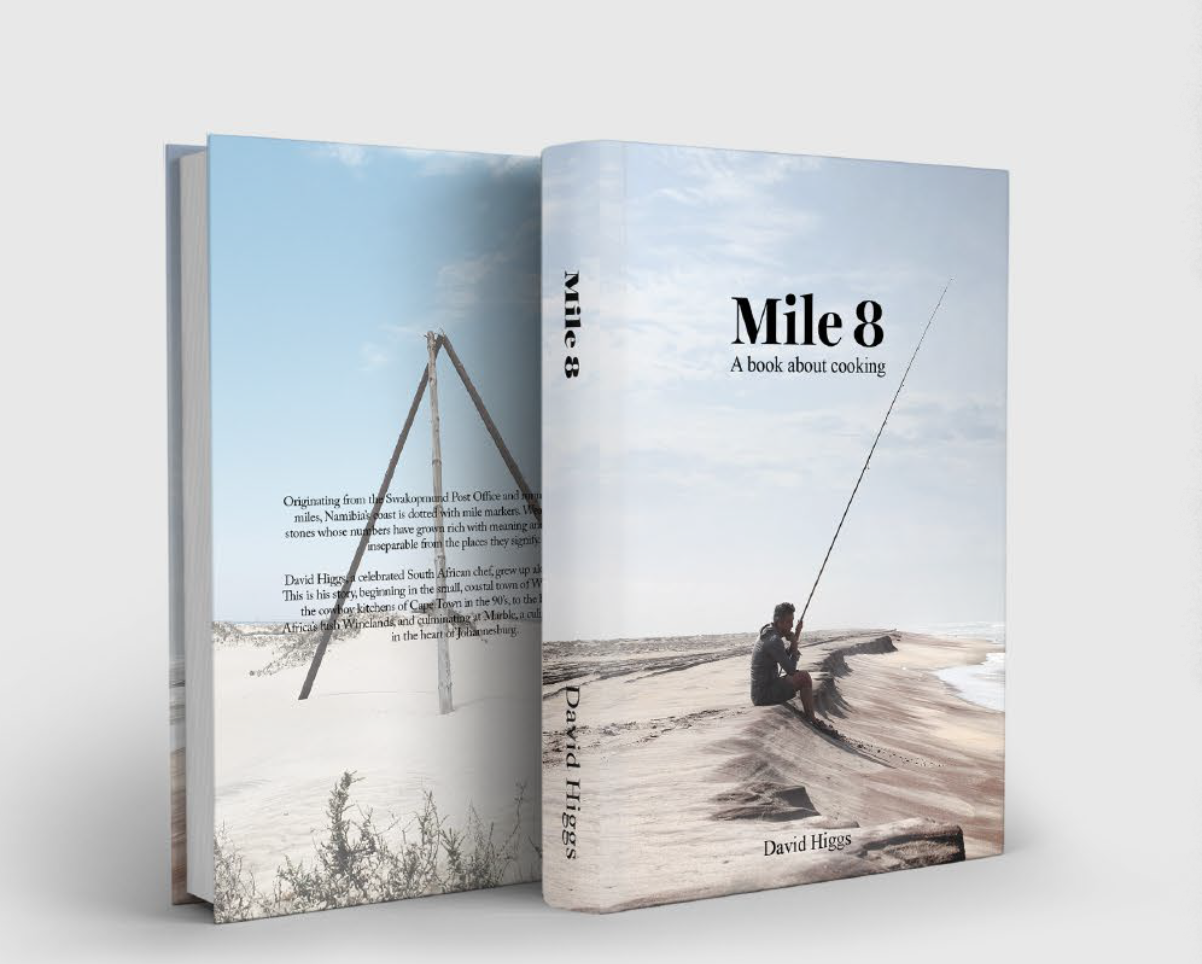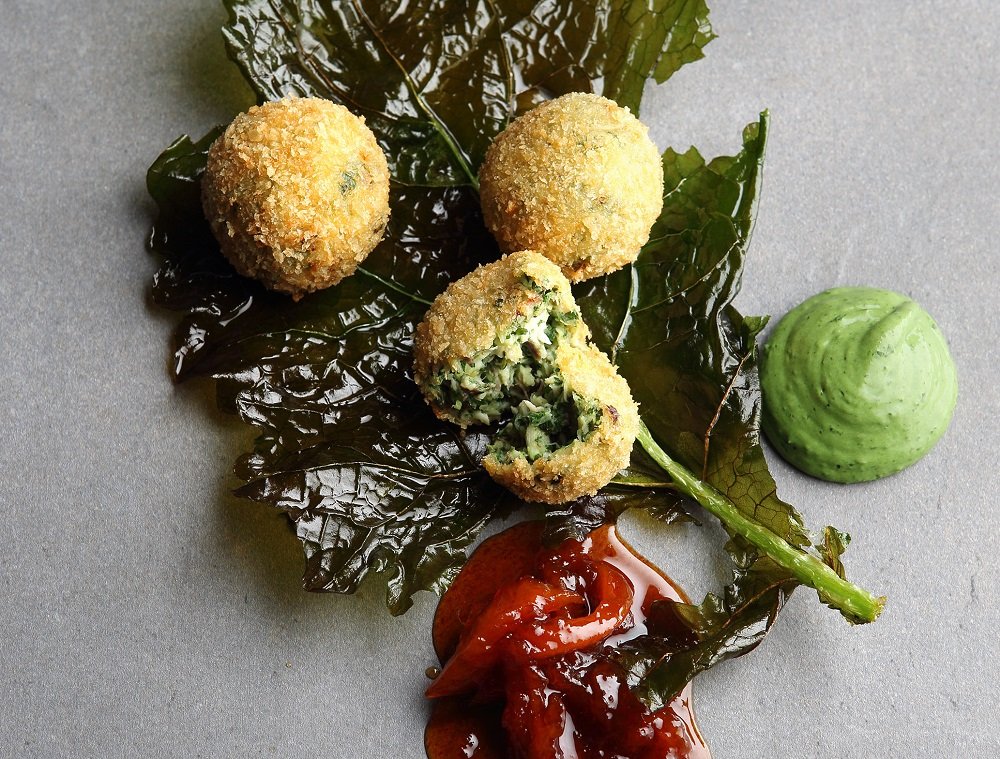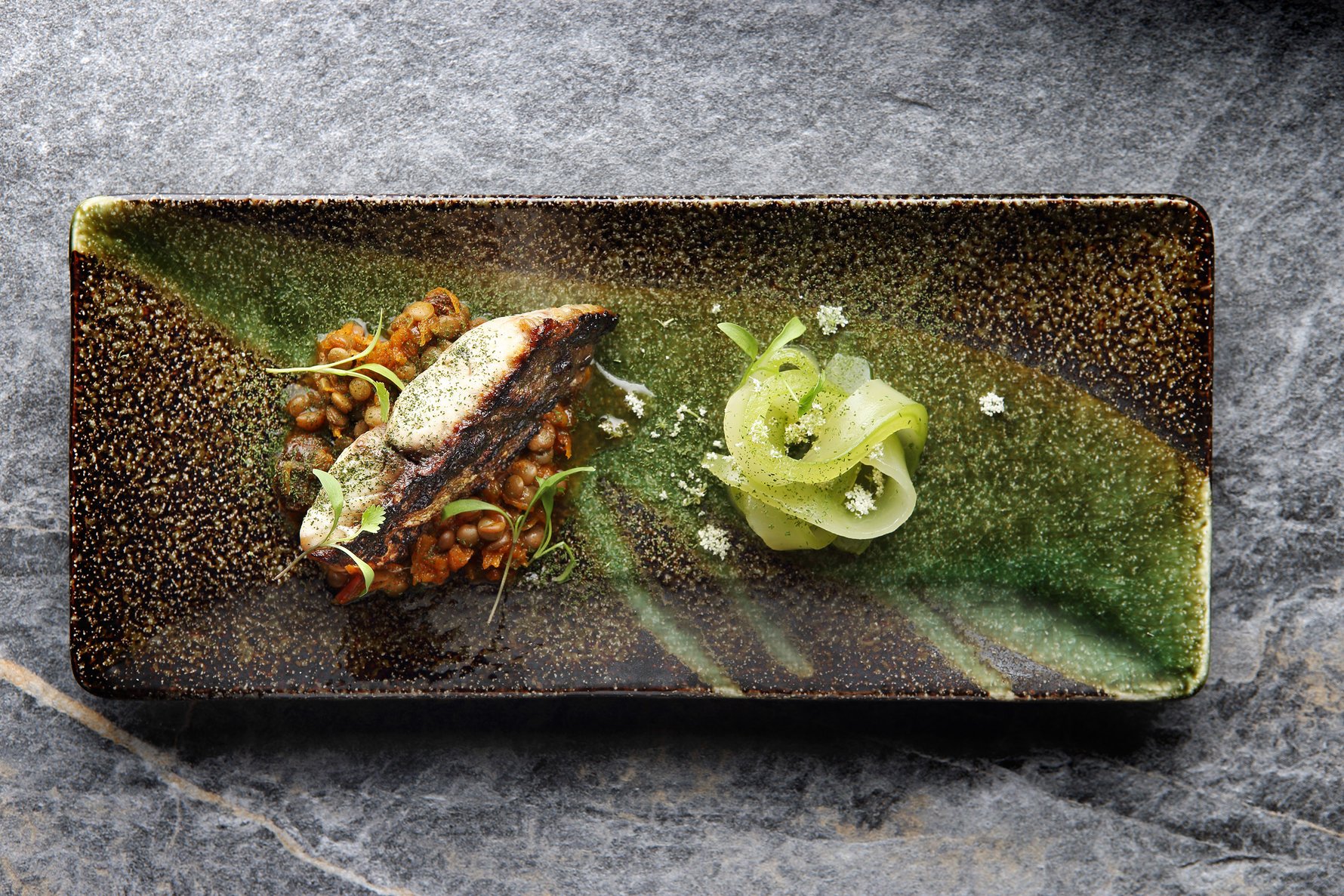Here are three tasty lockdown recipes from star chef David Higgs.
Chef and co-owner of two Joburg top restaurants Marble and Saint, David Higgs is a well known personality who has shaped many young chefs kitchen careers. He is also a TV star, after a stint as a judge on the popular My Kitchen Rules. His two restaurants were among the first to be closed as South Africa started to weigh up the risks of Coronavirus. He said he felt it was their "social responsibility to protect the health and safety of our team, the customers that visit our restaurants, and the community around us."
Opened in 2016 in Rosebank's iconic Keyes Art Mile building, Marble is a 'live fire' restaurant known for its stunning views, impeccable service, outstanding cocktails and delicious flame-cooked dishes, while Saint in The Marc building in Sandton is a lively Italian restaurant known for its great pizzas, excellent Champagnes spectacular decor and weekend DJ sets. Both are Joburg must-visits.

David Higgs is not one to sit still. Besides for being a phenomenal chef, he is also an avid cyclist and during lockdown has become the star of Instagram TV with his lively stay at home cooking sessions offering easy to follow lessons on everything from making an omelette to the best way to grill a steak, cycling talks and exercise sessions, and a daily #whatsinyourfridge feature where he suggests a recipe.
His book Mile 8, launched in 2019, is an amazing record of his life in the kitchen – and with the announcement of lockdown he launched a fund to support the 300 staff members who work at Marble and Saint with its sales.
Buy a copy of Mile 8 and 100% of the sale price will go towards the fund. Deliveries will take place after restrictions have been lifted. The three recipes below were selected for us by David Higgs from the more than 150 recipes detailed in this beautiful book. Support the fund and order your copy here. For daily updates, follow David Higgs on Instagram @davidhiggschef .

Lamb boerewors, fries, pimento sauce from the menu at Marble
Sewes, an Afrikaans gentleman my Mom knew, once told me that the only way to cook sausage is by placing it on the coals and only turning it once the sausage is warm to the touch on the back of the hand. Then turn and finish the process. NO constant turning. Also, for me, eat the damn thing off the grill on the coals – none of this plating nonsense. Eat the chips and the sauce afterwards.Lamb boerewors
500g beef
500g lamb
500g lean pork
250g speck (firm pork fat)
12g salt
3g ground black pepper
6g ground coriander
1g ground cloves
125ml brown vinegar
fresh thin sausage casing – salted
Pimento sauce
500g red and yellow pimento peppers
50ml olive oil
1 carrot – peeled and diced
4 cloves garlic – crushed
5 red chillies (medium heat) – deseeded and roughly chopped
120ml red wine vinegar
120ml rice wine vinegar
7g chipotle powder
12g brown sugar
5g salt
640g marble fries* – 80g per serving
Keep all ingredients very well chilled during the entire process. Cube all the meat and speck. Mix together and mince on a 5mm cutter. In a bowl, mix the meat with the spices and vinegar. Rest in the fridge for 2 hours. Rinse the thin casings in water during this time. Fit the casings onto a sausage maker and ll with the mixture. Leave in the fridge uncovered overnight. Grill on hot coals as needed – 80g per serving.
Roast the red peppers over a flame until soft and the skin is blistered. Alternatively, grill them in the oven to achieve the same result. Remove the seeds from the peppers and reserve the fresh with the skin on. Add the olive oil to a pot and cook the diced carrot until golden, then add the garlic and chillies. Over medium heat, add the roasted peppers and cook for 5 minutes. Add the remaining ingredients to the pot, cover with a cartouche (paper or silicone lid) and cook for 30 minutes on very low heat. Remove the pot from the heat and let the contents settle for 1–2 hours. Transfer the contents of the pot to a Thermomix jug or blender and blend on high until the sauce is smooth. Refrigerate the sauce until needed. Heat the sauce to serve and use 30ml per plate.

Mom’s fishcakes, chutney, parsley mayonnaise
My mom always made the most incredible fishcakes loaded with fresh parsley. There were always fish tails and offcuts in the house. Loved these bloody things with tons of ‘Mrs Ball’s’ – a South African favourite.Fishcakes
800g Up-To-Date potatoes – 450g cooked weight
1kg seabass offcuts – 650g cooked weight
6 spring onions – thinly sliced
15g parsley – chopped
2 lemons – the zest
7ml lemon juice
2 egg yolks
5ml hot English mustard
salt and pepper
Coating
3 eggs – beaten
100g flour
100g panko crumbs or breadcrumbs (made from bread without crusts)
oil – for deep frying
Parsley mayonnaise
220g parsley purée*
1 egg yolk
15ml Dijon mustard
25ml white wine vinegar
115ml olive oil/canola blend
7.5g xanthan gum
Fried kale leaves
8 kale leaves
olive oil – for brushing
Grandma’s chutney* or ‘Mrs Ball’s’
Line the base of a tray with coarse salt. Prick the potatoes and place on the tray. Bake in the oven at 180 °C for 40–60 minutes or until soft – depending on size. Once cooked, peel the potatoes, weigh 450g and while still hot, pass through a tamis – a kitchen utensil that is used as a sieve, food mill and grater. You could also just mash them until smooth.
Remove the skin from the seabass offcuts and grill until the flesh is white and flaky. Weigh and shred 650g of the fish into a large bowl. Add the potato and remaining ingredients. Mix to incorporate evenly. Remove 30g of the mixture at a time and roll into balls. You should have 24 balls – 3 per serving.
To batter, place the beaten eggs, flour and crumbs in separate dishes. Coat the fish balls by rolling them in this order – beaten egg, flour, beaten egg and finally, the crumbs. Deep
fry the balls at 180 °C until they are a deep golden colour.
To make the mayonnaise, add the parsley purée, egg yolks, mustard, and vinegar to a Thermomix jug. Blend on medium speed until combined. In a steady stream, add the olive oil to emulsify. Add the xanthan gum and continue to blend until well incorporated. Remove the emulsion from the jug and reserve in a piping bag in the fridge until needed. Wash the kale leaves and pat dry. Brush with olive oil and bake at 180 °C until crispy.
Drain excess oil on paper towels.
To assemble, arrange the elements of this dish as per the photo, or as you wish. For each serving, top a fried kale leaf with 3 fishcakes, and add 30g chutney and 15g parsley mayonnaise to the plate.

Seabass, lentil curry, pickled cucumber
This is a dish I have done often. I love a lentil curry, and it’s great paired with the fatty seabass.Seabass
640g seabass – filleted, skin on
salt and pepper
lemon zest – for sprinkling
Lentil curry
1 onion – finely chopped
1 carrot – finely grated
2 cloves garlic – grated on a microplane
5g ground cumin
3g mustard seeds
2 tomatoes – skin removed and finely chopped
8g wet seafood masala
5g brown sugar
350g brown lentils – cleaned
200ml tomato juice
250ml vegetable stock* (see below for recipe)
salt and pepper – to season
lemon – for squeezing
Pickled cucumber
200ml rice wine vinegar pickle* (see below for recipe)
2 cucumbers – peeled and seeded
32 sprigs micro coriander – 4 per serving
72 small fennel blossoms – 9 per serving
Cut the filleted seabass into 80g portions; do not remove the skin. Grill the fish skin side down first and turn when the flesh begins to change from translucent to white. Season with salt and pepper and finish with lemon zest.
Fry the onions, carrot and garlic until translucent. Add the spices and continue to cook for a few minutes. Add the finely chopped tomatoes, seafood masala, brown sugar, lentils, tomato juice and vegetable stock. Cover with a cartouche (paper or silicone lid). Simmer slowly for 1 hour until the curry sauce thickens slightly, but be careful not to overcook the lentils – they should be soft but remain whole. Adjust seasoning if necessary and finish with a squeeze of lemon. Allow to cool, and then refrigerate for a day before serving – curries develop flavour as they stand. Warm the curry gently in a pot as needed.
Pour the cold pickling liquid into a vacuum bag. Add the cucumber and vacuum seal. Refrigerate and leave for 24–36 hours. Remove the cucumber from the vacuum bag and slice into ribbons on a mandolin or use a peeler.
To assemble, arrange each plate as you wish, or by following the photo. Spoon 45g warm lentil curry onto each plate. Place the seabass on top of the lentils. Position 2 ribbons of the cold cucumber pickle beside the curry, and garnish with 4 sprigs micro coriander and 9 fennel blossoms.
Fundamentals
Vegetable stock
450g onions – diced
250g carrots – diced
150g leeks – diced
120g celery – diced
20g thyme
1 bay leaf
3g whole black peppercorns
3g fennel seeds
2.5 litres water
30g parsley stalks
Place all the ingredients in a pot, except the parsley. Bring the contents of the pot to a simmer and skim continuously, simmering for 45 minutes. Leave to cool and infuse. Add the parsley stalks to the liquid. Refrigerate for 2 days until the flavour has developed. Strain before using.
Rice wine and vinegar pickle
350ml rice wine vinegar
75ml water
7g black peppercorns
7g coriander seeds
7g fennel seeds
1 bay leaf
1 star anise
75g sugar
30g salt
In a pot, combine all the ingredients. Heat until the sugar and salt dissolves. Allow to cool, then refrigerate until needed.




Comments